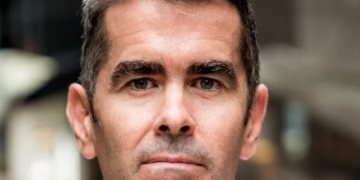- Without urgent interventions, including public health policy reform and stricter corporate regulations, 1.2 million additional opioid deaths are expected in North America by 2029—more than double the opioid overdose deaths that have occurred over the past two decades — and more deaths are expected globally as the epidemic expands beyond North America.
- The COVID-19 pandemic has both overshadowed and exacerbated the opioid crisis in North America. In 2020, the USA experienced a 37% increase in overdose deaths and Canada experienced a 67% increase.
- The Commission calls for bold, evidence-based action to break the cycle of addiction, curtail the current epidemic, and lay the foundation for future health policies that can end the opioid epidemic and prevent future addiction epidemics.
Without evidence-based public health policies that treat drug addiction as a chronic condition and prioritize prevention, the number of deaths from opioid overdoses in North America is predicted to grow exponentially, adding 1.2 million more overdose deaths by the end of this decade to the nearly 600,000 deaths that have already occurred since 1999. Opioid overdose deaths are also expected to increase worldwide as the epidemic expands beyond North America.
The opioid crisis began in the 1990s when policymakers and health care systems failed to stop the pharmaceutical industry’s aggressive push to increase opioid prescribing. The crisis became even worse over the past decade as illegal drugs such as heroin and fentanyl became widely available.
The year 2020 was the deadliest to date for opioid deaths in North America, totalling more than 76,000 deaths. The COVID-19 pandemic has simultaneously exacerbated and overshadowed the opioid epidemic by limiting access to opioid use disorder services, overwhelming healthcare systems, and creating stressors such as unemployment, disability, and loss of loved ones that can lead to greater drug use and addiction.
“Over the past quarter-century, the opioid epidemic has taken nearly 600,000 lives and triggered a cascade of public health catastrophes such as disability, family breakdown, unemployment, and child neglect in North America. If no action is taken, by the end of this decade, we are predicting the number of deaths to be twice as high as it has been over the last 20 years, totalling upwards of 1.2 million overdose deaths by 2029,” says Commission Chair Prof Keith Humphreys of Stanford University (USA). [1]
To help combat the opioid epidemic, authors of the new report, Responding to the opioid crisis in North America and beyond: recommendations of the Stanford-Lancet Commission, offer an analysis of the current state of the opioid addiction crisis and outline bold, evidence-based strategies to respond through public policy, industry reform, and innovations in pain management and prescribing methods.
He adds, “The opioid epidemic is a public health crisis that has developed over decades, and it could take at least that long to unravel it. To save lives and reduce suffering immediately, a cohesive, long-term public health strategy that can restrain and ultimately overcome the pharmaceutical industry’s powerful influence over health care systems is urgently needed. Health care systems also need to dramatically step up their effort to help people struggling with addiction. Our Commission’s recommendations are an important guide to begin reversing the opioid crisis in North America, laying the foundation for a public health strategy based on prevention and evidence-based treatment that will stop its worldwide spread.” [1]
Opioids are an important class of painkillers historically prescribed mainly in surgery, palliative care, and cancer care, but now prescribed for many short-term and chronic conditions ranging from lower back pain to headaches to sprained ankles. Without proper supervision or alternative pain relief methods, millions of people have become addicted to prescription opioids and later to other illicit and synthetic opioids, such as heroin and fentanyl, leading to hundreds of thousands of fatal overdoses.
An unregulated, dramatic growth and global spread-Since 1999, nearly 600,000 people in the USA and Canada have died from an opioid overdose – with the current rate of deaths exceeding the worst of the HIV/AIDS epidemic. Without reform, an additional 1.2 million people in North America could die from opioid overdoses by 2029, according to recently published modelling estimates from the Commission. [2]
The Commission’s analysis suggests that 2020 was the worst year on record for fatal opioid overdoses in the USA and Canada in terms of the total number of deaths and percentage annual increase.
Opioid overdose deaths in Canada increased by 72%, from 3,668 in 2019 to 6,306 in 2020, with a further 3,515 deaths reported in the first six months of 2021. In the USA, opioid overdose deaths rose by 37%, from 51,133 in 2019 to 70,168 in 2020, bringing the total number of deaths since 1999 to 583,000. The authors note that although the 2020 spikes might be partly attributable to the effects of the COVID-19 pandemic, a rising trajectory of deaths was evident in both countries before the pandemic.
Opioid-related deaths initially disproportionally affected white and Indigenous populations, but mortality among Black people has grown rapidly since 2011 (27 deaths per 100,00 people in 2020), surpassing non-Hispanic white populations (26 deaths per 100,000 people in 2020) and almost on par with deaths among the American Indian and Alaska Native population (28 deaths per 100,000 people). Overdose mortality has also recently risen steeply in Hispanic people, from 5 deaths per 100,000 people in 2015 to 13 deaths per 100,000 people in 2020.
Fatal opioid overdoses are concentrated among men and in young-to-middle-aged people. In 2020, men had an age-adjusted death rate 2.5 times higher than women, accounting for 71% (49,682/79,168) of overdose deaths in the USA and 75% of deaths (3.2 times higher than women) in Canada. In the USA, 87% (61,279/79,168) of opioid overdose deaths occurred in people ages 20-59, and this same age group accounted for 89% of deaths in Canada in 2020.
The Commission authors attribute the onslaught of the opioid epidemic to the profit motives of actors in the pharmaceutical and health care industry combined with disastrous regulatory failures from the U.S. Food and Drug Administration (FDA), Department of Justice, the Joint Commission, and many elected officials. This lack of oversight has led to a significant increase in opioid prescriptions since 1999 and represented a seismic shift in pain management medical practice. Urgent action is needed to improve regulation related to opioid over-prescribing practices and to make post-approval drug monitoring and risk mitigation a function of government. To lessen the often-overwhelming political clout of the industry, it also recommends exposing artificial advocacy groups funded by industry and restoring limits on corporate donations to political campaigns.
“Our analysis clearly lays out how lack of effective regulation and an unchecked profit motive created the opioid epidemic. To ensure safeguards are in place to curb the opioid addiction epidemic and prevent future ones involving other addictive drugs, we must end the pharmaceutical and health care industry’s undue influence on the government and its unregulated push for opioid use. This includes insulating the medical community from pharmaceutical company influence and closing the constantly revolving door between regulators and industry,” says Commission author Prof Howard Koh of Harvard’s T.H. Chan School of Public Health (USA). [1]
The authors warn that the opioid epidemic will expand globally without these provisions in place. Regulators must stop pharmaceutical producers from exporting aggressive opioid promotion practices abroad, much as the tobacco industry did when subjected to tighter regulation in the USA. Several countries outside North America targeted by the industry have already seen sharp increases in opioid prescribing, including the Netherlands, Iceland, England, Brazil, and Australia. For example, between 2009 and 2015, opioid prescriptions in Brazil increased by 465%. [4]
The Commission calls for high-income nations where opioid manufacturers are based to extend restrictions and legal sanctions to global operations. To give resource-limited countries an alternative to partnering with for-profit multinational corporations, the Commission recommends that the World Health Organization and donor nations provide free, generic morphine for analgesia to hospitals and hospices in low-income countries.
“Global regulations will be crucial in resource-limited countries, which already lack sufficient public health infrastructures and often are in need of effective pain killers that can help patients with pain management needs. However, right now many of these regions are ill-equipped to manage the public health fallout of a new opioid epidemic, especially on the heels of COVID-19,” continues Koh [1]
Treating addiction as a chronic condition with a focus on prevention and policy reform-
In the USA in particular, there is a lack of accessible, high-quality, non-stigmatizing, and integrated health and social care services for people experiencing opioid use disorder. Therefore, the Commission strongly recommends that addiction-related services become a permanent feature of health and social care systems in the USA and Canada, following established chronic disease management models that are financed and organised as a core public health commitment. This step will also require public and private health insurance system reform to promote many addiction recovery pathways, including methadone maintenance clinics, residential rehabilitation programs, and peer-led mutual help groups and recovery coaching. Investment in workforce development, specifically increasing the number of addiction specialists and increasing the addiction-related knowledge and skills of general practitioners, will also be essential to creating a reformed public health approach to addiction that treats it as a chronic condition.
“Addiction is an enduring part of population health and should not be treated as a moral failing that needs punishment but as a chronic health condition that requires ongoing treatment and long-term support. We may not know what future addiction might take hold in our society, but we do know that without a public health foundation based in supportive recovery and prevention, addiction will continue to plague our health systems and our communities,” says Commission author Prof Yasmin Hurd of the Icahn School of Medicine at Mount Sinai (USA). [1]
The Commission also suggests solutions for working with law enforcement and governments to maximize the good the criminal justice system could do while minimizing the damage it can inflict. Recommendations include providing addiction treatment and other health services during incarceration, forgoing incarceration for possession of illicit opioids for personal use, and ending punishment for opioid use during pregnancy.
Innovation and intelligent prescribing for pain management
The Commission points out that opioid medications are both medically essential while also dangerous, calling for a nuanced approach to the future of pain management, which must prioritise innovation both in society’s response to drug addiction through reformed policies and by supporting the development of new, non-addictive pain management options.
“Opioids should not be viewed as good or bad, but instead as a class of medications essential to the management of pain. However, opioids come with serious risks, some of which can be difficult to recognise. This is especially true when high doses are prescribed, which is more likely in the absence of oversight, clear medical practice guidelines, and government regulations. Clinicians should begin learning about responsible pain management prescribing in medical school and continue to learn about it as part of their commitment to continued medical education throughout their careers,” says Commission author Prof David Juurlink of the University of Toronto (Canada). [1]
The Commission recommends opioid stewardship to help restore trust in medicine among policymakers, clinicians, and the public. Methods for fostering opioid stewardship include prescription drug monitoring programs, developing safer prescribing protocols, utilizing opioid agonist therapy like methadone maintenance, and improving strategies for distributing the opioid overdose rescue drug naloxone.
“This stewardship must be paired with opioid use disorder treatment options that are supportive and effective, and that prioritise developing innovative, non-addictive pain management treatments. The COVID-19 pandemic has proven that through collaboration and innovation, the rapid development of vaccines, treatments, and public health policies is possible. That same commitment and collaboration must now be applied to the opioid crisis,” says Hurd. [1]
Investing in young people to reduce risk of addiction
The cycle of substance use disorders can be broken by investing in education and community support for children from a young age. Research indicates that adverse experiences during childhood and adolescence – such as lack of positive rewards in the environment, family breakdown, and physical and verbal abuse – can influence the likelihood of future addiction. This time of life is also when exposure to and incidence of substance use disorders is most concentrated.
The Commissioners suggest developing comprehensive programs for youth that encompass many different risks and risk factors and give young people the tools to navigate all of them. These programs should be paired with initiatives that aim to strengthen health, well-being, and school readiness starting in young children to reduce the risk of addiction later in life.
“Preventing drug addiction should be part of a comprehensive public health strategy that starts in childhood and lays the foundation for long-term declines in addiction. These programs will only succeed with other policies and regulations in place that will reduce the likelihood that children and adolescents encounter opioids in the first place. Many parents falsely believe that their children will only encounter opioids outside the home, but most young people are more likely to access opioids for the first time from their home medicine cabinets,” says Commission author Assistant Prof Chelsea Shover of the University of California Los Angeles (USA). [1]
The Commissioners acknowledge that while some additional deaths from opioid overdoses are unavoidable, the recommendations should be put into action immediately to reduce future deaths and lay a framework to prevent future addiction crises.
“Ending the opioid epidemic in North America and preventing its global spread is an audacious but achievable goal. It requires a dramatic shift in policy and culture where innovation, collaboration, and regulation are encouraged. We can save and improve lives by summoning the resources and political will necessary to eliminate the sources of addiction and boldly implement policies that will maximise efforts to treat it,” says Humphreys. [1]
A linked Editorial published in The Lancet says, “Innovation and transformation in the approach to ending the opioid epidemic must be met with reinforced regulation. US institutions were subverted through failures in post-marketing surveillance and physician education, and by permitting financial conflicts of interest between regulatory agencies and industry. But the moral of the opioid crisis is not that it could happen only in North America. Without reigning in deceptive marketing and prescribing practices and international funding for subsidised generic morphine for low-income countries, the possibility of other opioid crises remains. The risk of global spread is greater where COVID-19 has ravaged health systems, where pain needs in resource-limited settings go unmet, and where corporations look for new markets, but are left to self-regulate. To manage pain, greed must be managed as well.”







































